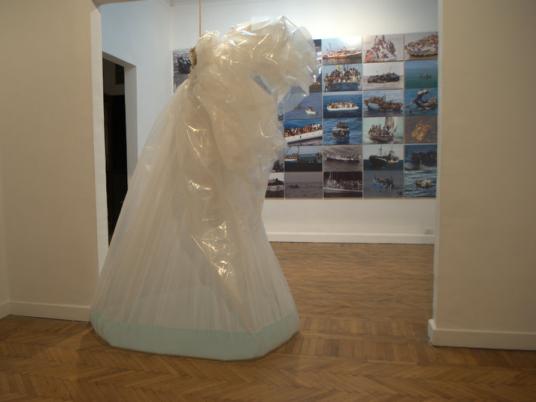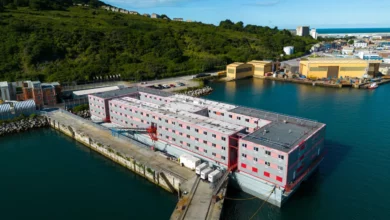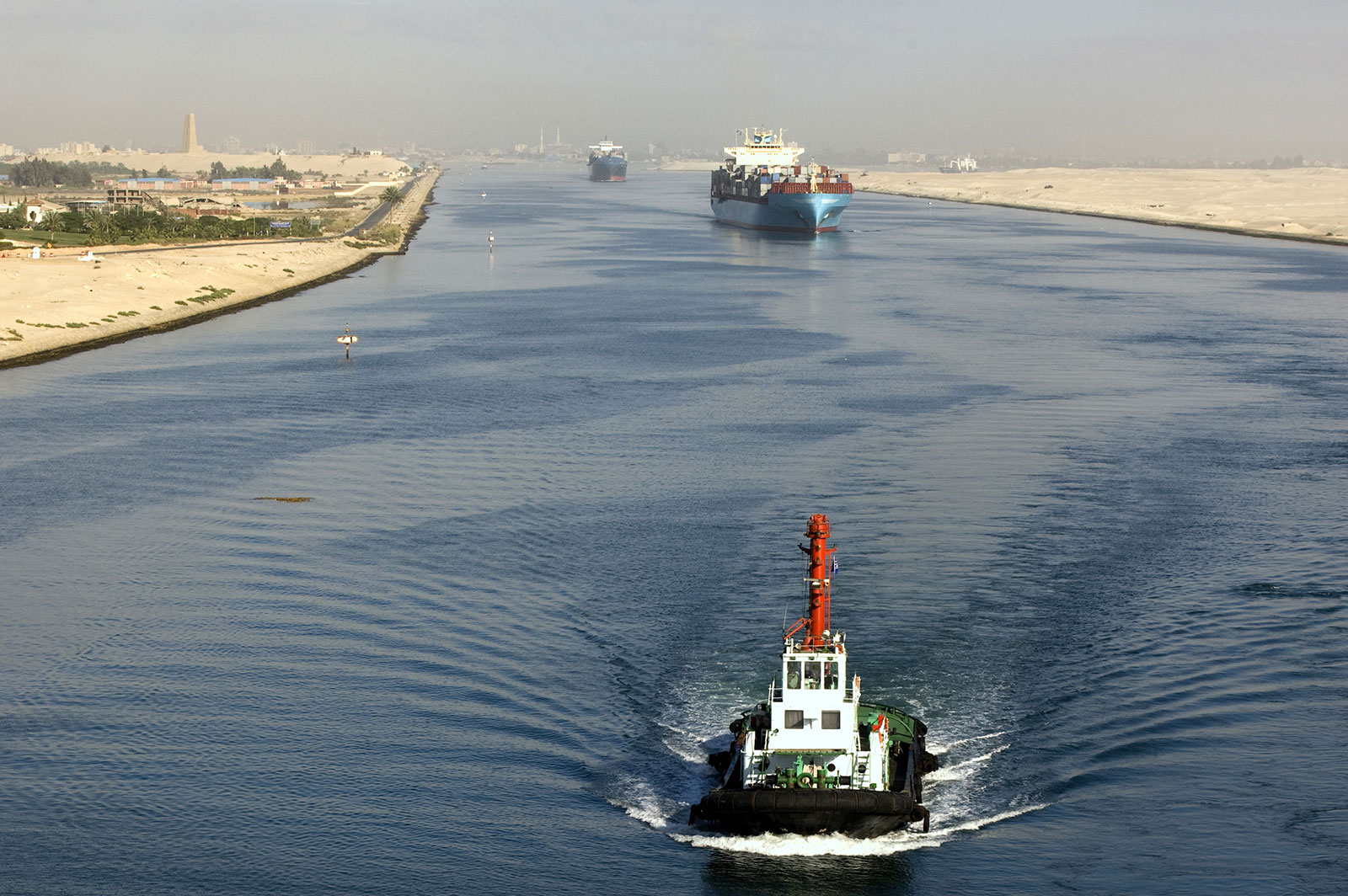
The sea seemingly remains the only space on earth not divided and controlled down to the last square centimeter. Classically embodying mystery, danger, and opportunity, throughout history, it has been a space where humans battle nature to dominate the globe. Exposing the threat and possibility of the sea, “Hydrarchy — Transitional and transformative seas,” the latest exhibition at the Contemporary Image Collective (CiC), explores the vast liminal space as both a landscape of myth, and an unruly arena where contemporary nationhood and power must exist outside of their assumed boundaries; works on display dig up stories lost in the past or simply floating under the radar of the present.
A first exhibition, “Hydrarchy: Power and resistance at sea,” curated by CiC Artistic Director Mia Jankowicz and her long-time collaborator, curator Anna Colin, was held at Gasworks in London in 2010. “Hydrarchy” in Cairo, while conceptually connected and also curated by Colin and Jankowicz, includes an entirely separate selection of work. Turning its focus toward the Mediterranean and North Africa, the Cairo exhibition examines irregular migration and the Suez Canal, but also includes a number of non-region specific pieces.
“Hydrarchy” ushers in viewers via an impressive installation by conceptual artist Lawrence Weiner that ascends through the cramped stairwell leading to the CIC. The piece is simply text on a wall, consisting of bright red and green vinyl lettering that begins by combining an echo of British maritime poetry with the mathematical language of navigation: “At a tangent to what appears to be infinity over the bounding main…” It continues on in a similar style up the stairs.
Weiner’s installation brings a sense of grandeur to the entire “Hydrarchy” project, on the way in framing the alternative world of the sea as it will be presented in the exhibition, and on the way out serving as one last reminder of the monumental strangeness of great bodies of water.
Common to several works in the exhibition is a kind of alternative approach to storytelling, and an interest in uncovering stories that are, as one slide in Uriel Orlow’s “The Short and the Long of it 7.0” reads, “Beyond the silence and the chatter of history.”
Orlow’s extended multi-media research endeavor digs up the story of a fleet of cargo ships that became trapped in the Suez Canal’s Bitter Lake at the outbreak of the June 1967 War, and were stuck there for eight years. The story itself is a fascinating one, that of a small collection of sailors gradually building their own miniature sovereign nations, producing stamps and holding sporting events. Orlow’s interest, however, is not simply in telling the story, but in examining how it continues to exist today. Orlow focuses on the physicality of the archival remains: a photograph of slides that are not shown, stamps created for mail from the ships, an image of a photograph in a book — all remaining artifacts of this lost story.
“Images are not just information, they have a visceral material quality,” says Orlow. Presented with these artifacts, viewers must cull through the remains themselves, piecing together this strange blip in history.
Re-telling another long-lost story in a much more fantastic and abstract way, The Otolith Group’s film “Hydra Decapita” takes on a complicated legacy of art and myth surrounding the Zong slave ship, which was depicted by painter James Turner, then discussed by 19th century art critic John Ruskin, and later mythologized by Detroit electronic musicians Drexciya through a futuristic narrative of slaves developing into submarine humans after having been thrown overboard.
The film, while initially somewhat inscrutable, captures the dystopia of the Drexciya narrative by immersing the viewer through its imagery and soundscape. Granulated flickers of the sea begin to join the dark space surrounding the projection and suck the viewer into the submarine almost-reality of the film. Otherworldly singing and both spoken and written narration combine to reconstruct a story just barely burbling up from its watery grave. “My transcription is filled with the remnants of ancient death,” a distant researcher types across the screen as he sublimates voices long buried at sea.
Bouchra Khalili’s “The Mapping Journey Project” employs a simpler, more straightforward means of storytelling. Khalili interviewed immigrants who had crossed from North Africa into Europe via the Mediterranean. As they speak about their experiences crossing the sea, finding work, and slipping by as undocumented laborers, the interviewees draw out their journeys in red pen on a map. Their drawings create a visual representation of transience forced by existing borders and immigration laws and the ways they can be sidestepped.
But not all of the works in the exhibition are narrative. Ayed Arafah’s “Sea Package (A Sea in Ramallah)” is a towering plastic bag, as majestic as such an object can be, filled with seawater and sitting imposingly in the center of the front gallery space. Arafah’s piece is one straightforward political and poetic expression, an object that makes a statement but also can simply be admired and contemplated.
Discussing the first iteration of “Hydrarchy,” Jankowicz spoke of the prevalence of maritime mythology in England, a nation that achieved world-domination through sea power. “In Egypt you are free of the maritime clichés,” she said, “but you realize, for example, how much the space of Suez has shaped Egyptian history forever.”
Though it seems impossible to forget about two thirds of the earth’s surface, the sea is often the invisible frontier of geopolitics. One of the successes of “Hydrarchy” is bringing forward the relevance of the sea to this specific region. But the exhibition is not a research paper; it is a collection of artwork, and these works also speak more generally to the nature of the sea as an unknown theater of possibilities (both good and bad) that has captured human imagination for millennia.
“Hydrarchy” will be accompanied by a symposium scheduled to take place on Friday 6 January. The exhibition will be open until 7 January, Tuesdays through Fridays from 12 pm to 8 pm, at the Contemporary Image Collective, 22 Abdel Khalek Thawrat St. 4th Floor, Downtown, Cairo.




